Put time into dinner now, and you can make it last forever—or at least the whole week. Welcome to Halfway to Dinner, where we show you how to stretch your staples—or your seasonal produce—every which way.
Today: Rachel Alice Roddy of Rachel Eats proves that turnips are surprisingly adaptable, with five recipes from soup to pickles.

"Oh dear," said my friend when I told her I'd been asked to write about turnips. "Does anybody actually like them?" she asked. I was about to say, "I do," but she had already changed the subject entirely. Afterwards, it crossed my mind she was probably referring to the winter variety—stout, purple-tinged turnips. If left too long, these turnips can become stringy and harsh, making them the butt of ridicule. But if you catch them before they turn, early winter turnips can be excellent, especially roasted or—better still—creamed, baked with butter or, as I once ate in France, glazed and served with ham.
It is not the early variety we are taking about today, however, but the late winter and early spring turnips. These are distinguished by their white spheres, bunched together by bright green leaves. "Three more bunches?" asked the vegetable seller at my local market in Rome each time I returned for turnips, "Don't forget to eat the leaves!"
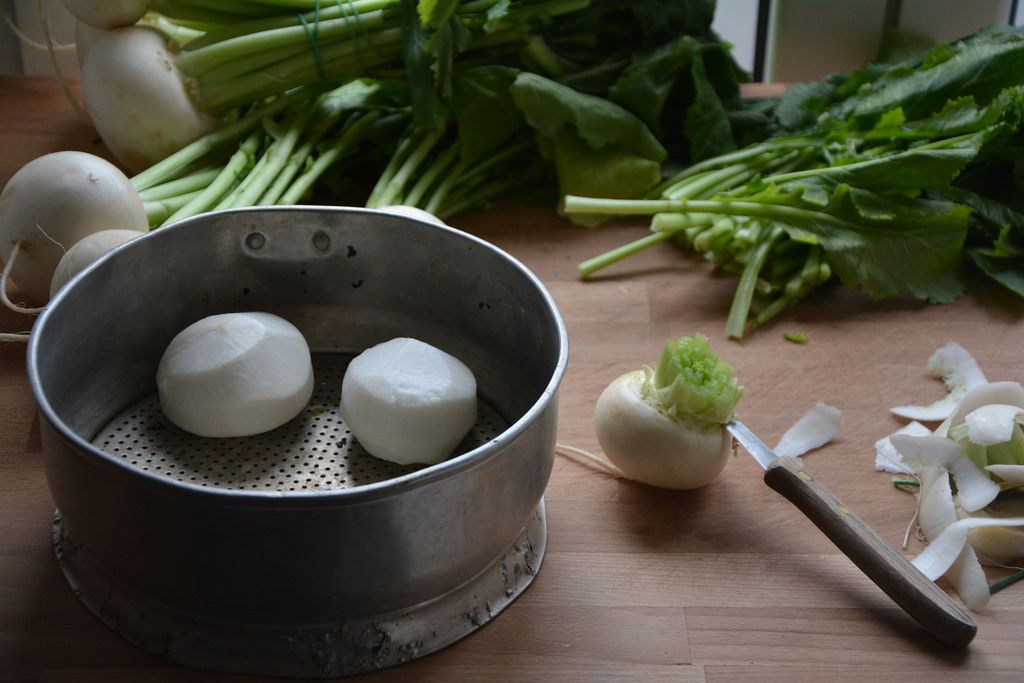
Turnip leaves (also referred to as tops or greens), which have a slightly peppery warmth reminiscent of mustard greens, are delicious twice-cooked. The turnips themselves are crisp and bittersweet, and surprisingly adaptable, making a wonderful addition to soup, risotto, and pickles. And they have a rich history in Italy—turnips were one of the earliest cultivated vegetables in the country and were an important food source for the ancient Romans. As the story goes, at the start of the third century, the Roman war hero Curius Dentatus refused a large amount of gold to defect to the side of Hostile Samnites because he was busy roasting turnips over a fire.
When choosing turnips, look for bright, lively leaves and smallish white bulbs. Avoid those that are too bloated, faded, or smell too strongly. To prepare the turnips, strip a thin layer away from the bulbs with a vegetable peeler and wash the leaves thoroughly, as they are very good at hiding mud and grit. Now get cooking:
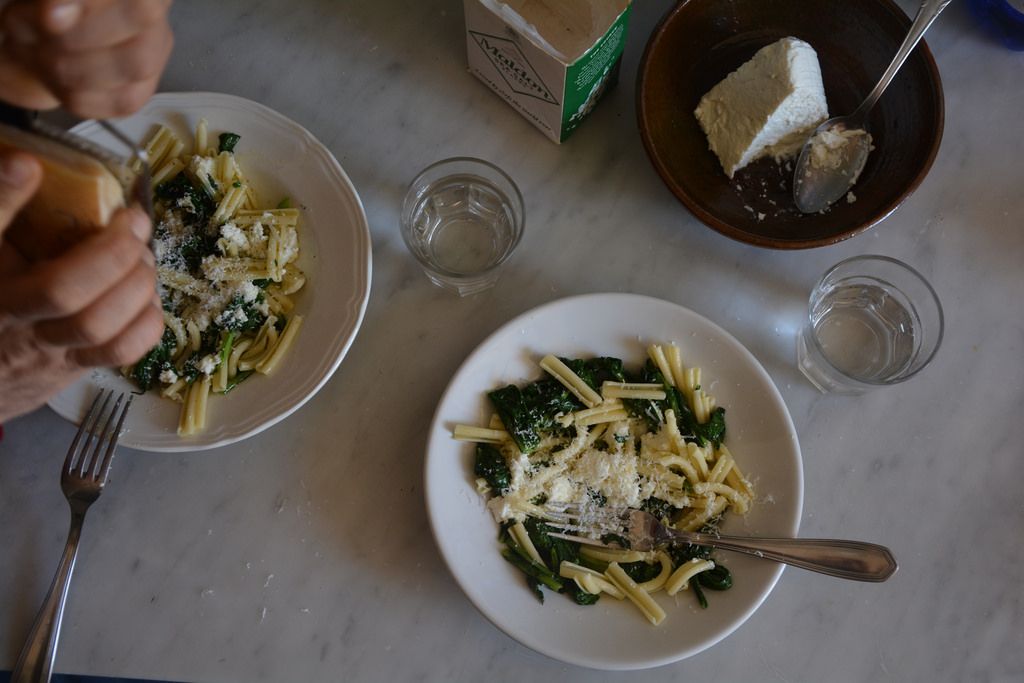
Pasta with Turnip Greens and Ricotta
One of the most useful and delicious things I have learned since living in Rome is to ripassare greens. It means to cook them twice, first boiling them briefly and then re-cooking them in a skillet with garlic-scented olive oil. Cooked this way, turnip greens can then be served as a side dish or mixed with pasta for a quintessential southern Italian dish. Turnip greens, with their slight bitterness, work beautifully ripassata and mixed with pasta, especially orecchiette. The key to this dish is to use a generous amount of good extra-virgin olive oil and to never let the garlic burn. Finish the dish with a blob of ricotta and a dusting of Parmesan or pecorino.

Pickled Turnips
My mom craved pickles when she was pregnant with me, which might explain my enthusiasm for them—I just wish I had learned how easy it is to pickle them earlier in life. Since learning this simple technique, I have pickled cauliflower, beets, carrots, radishes, and—best of all, turnips. There is something about the crispy, peppery sweetness sharpened by spiced vinegar that hits the pickle spot. While I'd eat these with anything, they're particularly good with cured meat, cheese, and in sandwiches as a sharp chutney.
These are as simple to make as putting wedges of turnips into a pickling liquid flavored with bay leaves and peppercorns, adding some beetroot for a pleasing pink tint. Seal and leave the jar for at least a day and up to a week in a cool, dark place. Once opened, store it in the fridge.
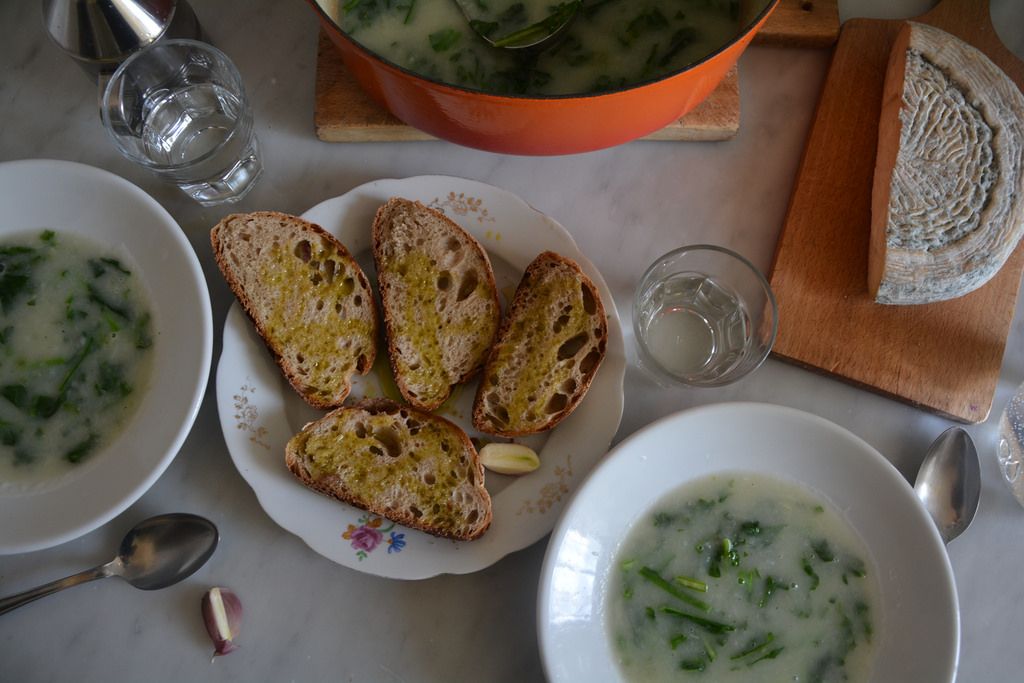
Turnip Soup with Garlicky Turnip Greens
I learned to write recipes while helping my friend and chef Mona Talbott with the American Academy in Rome soup cookbook. Every Sunday for seven months, I noted my friend's quantities and technique as she cooked soup. At the end of the day, I would walk down the curving Gianicolo Hill, my mason jars filled with soup clinking in time with my steps.
This soup was one of my absolute favorites. It is simple and smooth with the essence of turnip and a pleasing hint of aromatic, herbal bay. To make it, simmer sliced turnips, potatoes, and onions in broth or water. The key to stong flavor is to patiently sweat the water out of the turnips before you add more water or stock. Then, swirl in dark green turnip greens which have been wilted in olive oil and garlic, and serve it with olive oil-soaked toast.
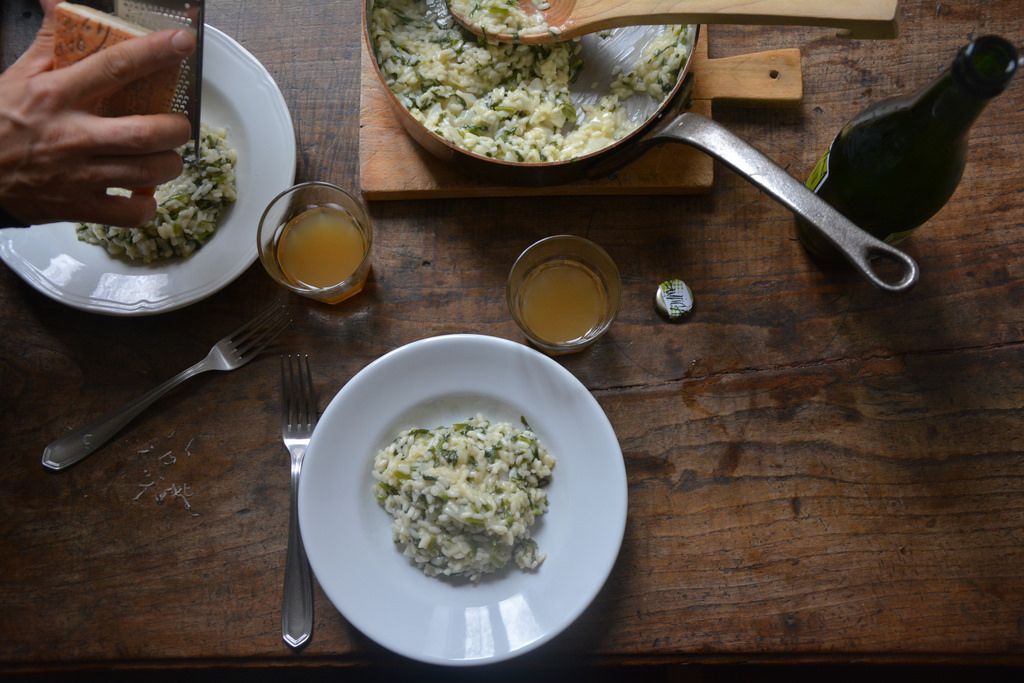
Turnip Risotto
I first got the idea for turnip risotto from a stallholder at my local market. I was wary, but then I tried it and was surprised by the delicate, vegetal risotto that came together one grey Wednesday lunchtime. To prepare it, sauté chopped turnip greens in olive oil, then add arborio rice and wine. Add stock ladle by ladle until the rice is plump. After one minute, it will be time for the beating process, or mantecatura, during which butter and Parmesan cheese is whipped in to make the risotto beautifully creamy. Even if you're just cooking for two, make enough for four. The remaining risotto can be molded into balls, rolled in breadcrumbs, and fried to make arancine.
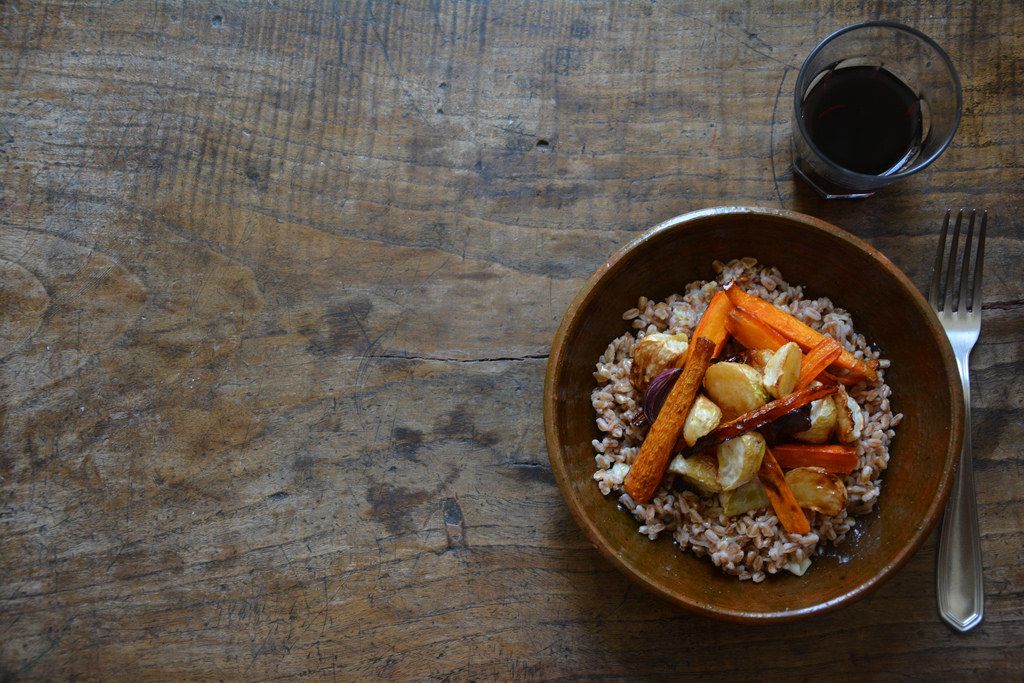
Roasted Turnips with Carrots and Farro
As is the case with so many vegetables, the roasting process means that water evaporates and the natural sugars and flavors are concentrated. The turnips, red onion, and carrots in this dish shrivel slightly, crisping and curling at the edges. Farro, another ancient Roman staple, provides a tasty, nutty base for the vegetables. I feel as if I could march a very long way after eating this. I have been known to top this with a poached egg or crumbled feta cheese. Ideally, keep a portion for the next day, when it is even better.
Serves 4
4 to 6 medium turnips
4 to 6 medium carrots
2 red onions
Salt
6 tablespoons extra-virgin olive oil
2 cups farro
See the full recipe (and save and print it) here.
Photos by Rachel Roddy









See what other Food52 readers are saying.